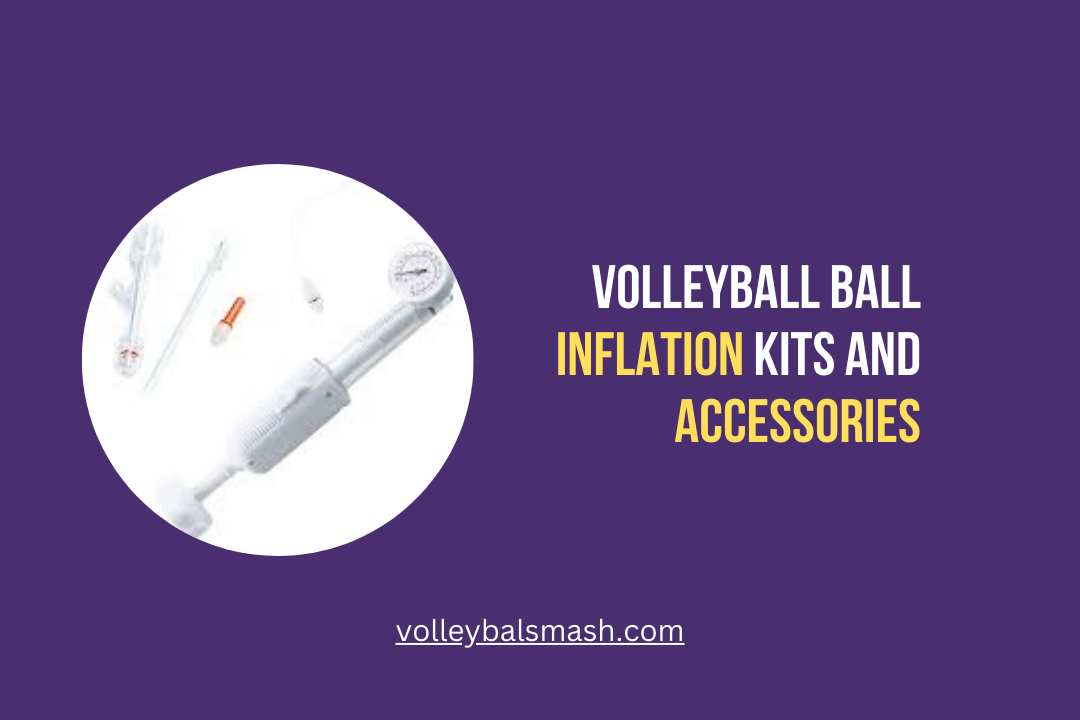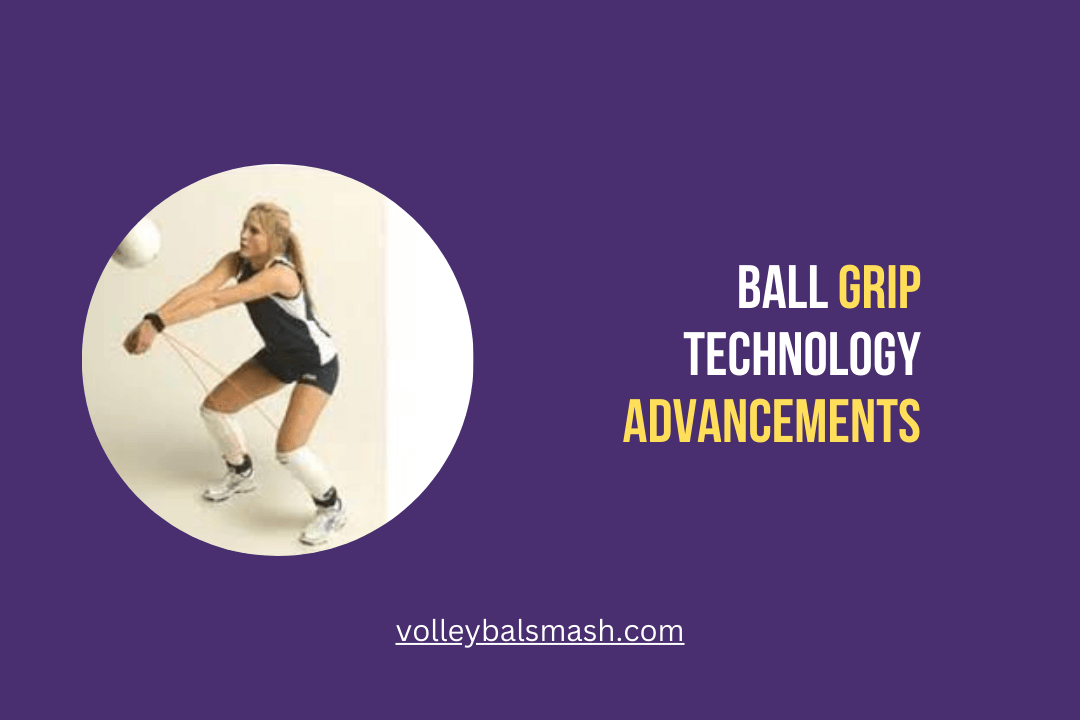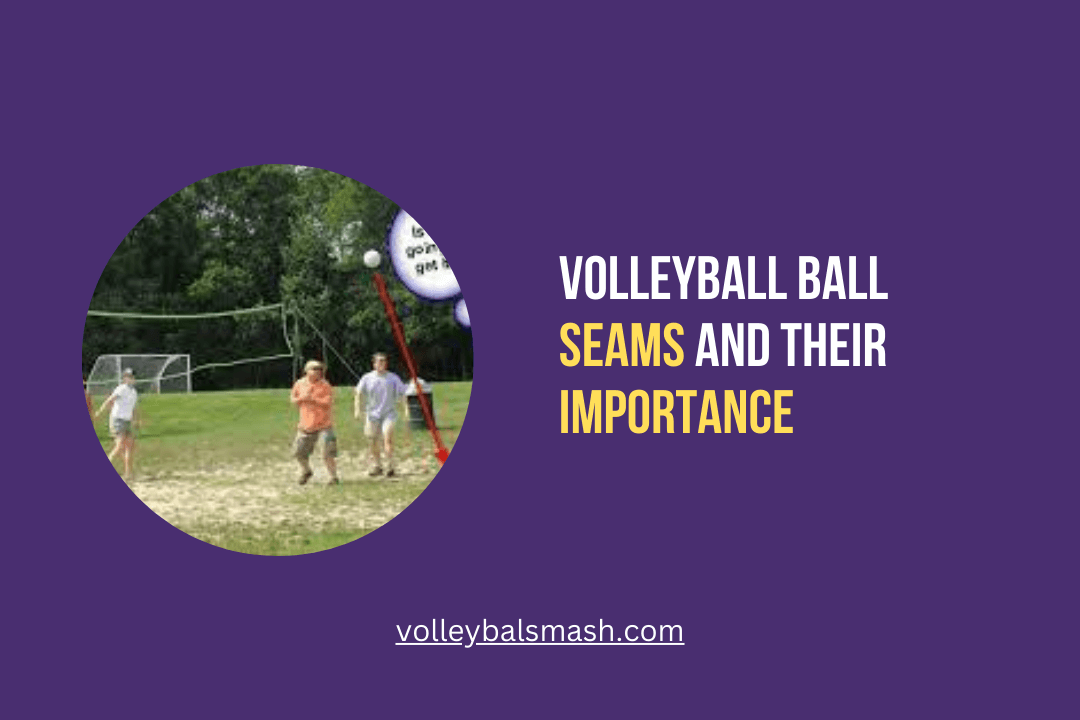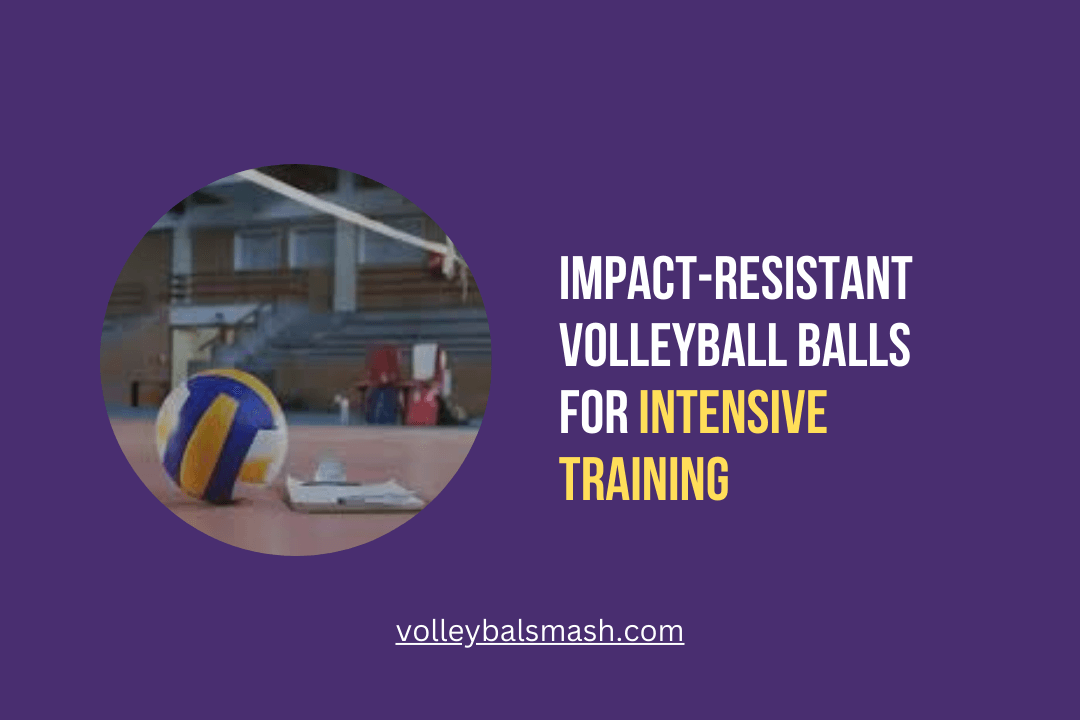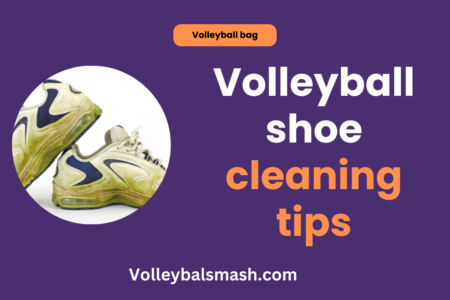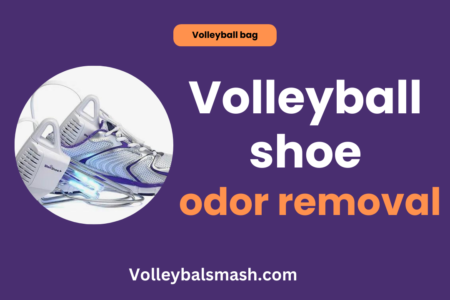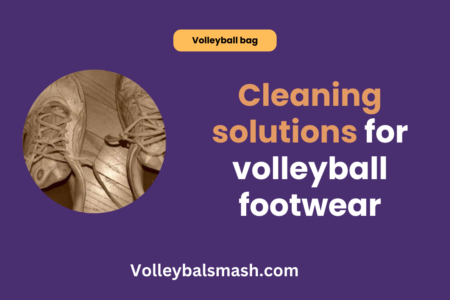When it comes to choosing the right volleyball ball for your game, texture is a crucial factor to consider. The surface of a volleyball can greatly impact its performance and playability, so it is essential to be informed about the different textures available on the market. In this blog post, we will compare various volleyball ball textures to help you make the best decision for your game.


Comparing various volleyball ball textures
Have you ever wondered about the distinct differences in volleyball ball textures and how they can impact your game? In this blog post, we will delve into the critical factors to consider when choosing a volleyball ball, including the texture of the surface.
Understanding the various textures and their implications can greatly enhance your playing experience and performance on the court. Whether you prefer a smoother, grippy surface or a more abrasive texture, knowing the differences can give you the upper hand in your game.
Materials and Design
Some volleyball balls are made of synthetic materials like polyurethane, composite leather or microfiber, while others are made of genuine leather. The design of the ball also plays a significant role in determining its texture and performance on the court. Understanding the materials and design of volleyball balls can help you make an informed decision when selecting the right ball for your game.
Common Materials Used in Volleyball Balls
When it comes to volleyball ball materials, there are several common options to consider. Synthetic materials like polyurethane and composite leather are often used to make indoor volleyballs. These materials offer durability, consistent texture, and good grip,
making them suitable for competitive play. On the other hand, genuine leather volleyballs are typically used in outdoor settings due to their ability to withstand the elements. They may require more maintenance to retain their texture and performance, but they offer a traditional feel preferred by some players.
ball packing and storage advice
Impact of Design on Ball Texture
The design of a volleyball ball can significantly impact its texture. The number of panels, their arrangement, and the quality of the seams all contribute to how the ball feels in your hands and how it moves through the air. Balls with fewer panels and well-constructed seams tend to have a more consistent texture and flight pattern, making them easier to control and predict during play.
Additionally, the surface texture of the ball, whether it be smooth or dimpled, can affect the ball’s grip and aerodynamics. It’s important to consider the design elements of a volleyball ball when evaluating its texture and performance.
Historical Development of Volleyball Textures
If you are curious about the different textures of volleyball balls, it’s essential to understand the historical development of these textures. The evolution of volleyball ball textures has been influenced by various factors, including the materials used and advancements in technology.
Early Materials and Textures
In the early days of volleyball, the materials used for the ball were limited to natural materials such as leather or rubber. These early materials resulted in a relatively smooth texture, which affected the ball’s grip and control. As a result, players had to adapt their playing style to accommodate the limitations of the ball’s texture. The smooth surface also made it difficult to maintain a consistent level of play, especially in outdoor environments where the ball could be affected by weather conditions.
Evolution of Volleyball Design
As technology advanced, the design of volleyball balls also evolved. Manufacturers began experimenting with new materials and textures to improve the performance of the ball. This led to the development of textured surfaces that provided improved grip and control for players.
The introduction of synthetic materials also allowed for more consistency in the ball’s texture, making it less susceptible to weather conditions. These advancements not only enhanced the playing experience but also contributed to the overall safety of the game, as players were less likely to lose control of the ball due to its texture.
Types of Volleyball Ball Textures
Obviously, volleyball balls come in various textures that can affect performance and player experience. The following are the main types of volleyball ball textures:
| Smooth and Glossy | Dimpled and Microfiber |
| Rubber-based | Composite leather |
| Soft-touch | Textured polyurethane |
| Mesh-covered | Pro-touch |
| Microfiber composite |
ball seams and their importance
Smooth and Glossy Textures
When it comes to smooth and glossy volleyball ball textures, the main advantage is the sleek surface, which allows for easy handling and smooth delivery. However, this type of texture can sometimes be slippery, affecting your grip and control over the ball. It is important to consider this factor when choosing a volleyball ball with a smooth and glossy texture.
Dimpled and Microfiber Textures
On the other hand, dimpled and microfiber textures offer improved grip and control, allowing you to handle the ball more effectively during gameplay. The textured surface provides better traction, enhancing your ability to maneuver the ball with precision. When selecting a volleyball ball, you may want to consider the benefits of dimpled and microfiber textures for a more secure grip and enhanced performance.
Types of Volleyball Textures
While volleyball balls might all look the same at first glance, there are actually several different textures that can be found on their surfaces. These textures can have a significant impact on the performance of the ball, affecting its grip, flight, and bounce. Understanding the different types of textures can help you choose the right volleyball for your playing style and preferences.
| Smooth Surface Volleyballs | Dimpled Surface Volleyballs |
| Microfiber Surface Volleyballs | Composite Cover Volleyballs |
| Leather Surface Volleyballs | Foam Construction Volleyballs |
| Soft Touch Volleyballs | Hard Surface Volleyballs |
| Textured Surface Volleyballs | Rubber Cover Volleyballs |
Smooth Surface Volleyballs
Smooth surface volleyballs are known for their sleek, uniform texture that offers a consistent feel and flight. The lack of surface irregularities can make it easier to predict the trajectory of the ball and provide a more controlled touch. However, the smooth surface also means less grip, making it potentially more challenging to handle and control the ball, especially in wet conditions or when your hands are sweaty.
Dimpled Surface Volleyballs
Dimpled surface volleyballs feature a series of small indentations across their surface, which can help enhance the aerodynamics of the ball during flight. The dimples reduce air resistance, facilitating smoother and more stable trajectories. This can be particularly advantageous for jump serves and powerful spikes, giving you an edge in terms of control and accuracy. However, the decreased surface area contact may affect grip, impacting your ability to set or volley the ball with precision.
Performance Analysis
To understand the performance of different volleyball ball textures, it is essential to analyze how they impact various aspects of the game. You can find a diverse range of opinions on this topic by visiting Whats the point in the newest balls : r/volleyball subreddit.
Texture Influence on Ball Control and Grip
The texture of a volleyball can significantly influence your ability to control the ball and maintain a solid grip during play. A smoother texture may result in less grip, making it more challenging to control the ball accurately. On the other hand, a rougher texture can provide better grip, allowing you to handle the ball with more precision and confidence. The right texture can enhance your control over the ball and improve your overall performance on the court.
Effects of Texture on Ball Trajectory and Speed
The texture of a volleyball also plays a crucial role in determining the trajectory and speed of the ball when it is hit or served. A smoother texture can result in a more predictable ball trajectory, making it easier for you to anticipate its movement. Conversely, a textured surface can create unpredictable movements, making it more challenging for your opponents to anticipate and react to the ball. The right texture can give you an edge in dictating the trajectory and speed of the ball, allowing you to strategically outmaneuver your opponents.
When considering which volleyball ball texture is best suited to your game, it’s essential to weigh the influence on ball control and grip, as well as the effects on ball trajectory and speed. Finding the right balance of texture can give you a competitive advantage on the court, enhancing your overall performance and contributing to a more successful playing experience. Choose a texture that suits your playing style and helps you excel in critical game situations.
Impact of Texture on Performance and Playability
However, when it comes to volleyball ball textures, the impact on performance and playability is significant. The texture of the volleyball can affect everything from control to aerodynamics, ultimately influencing the outcome of the game. According to Volleyball Design and How Volleyball Designs Affect the Game, the texture of the ball is a key factor in its overall design and can have a profound effect on gameplay.
Texture Influence on Ball Control
The texture of the volleyball can greatly influence your ability to control the ball during play. A ball with a rough texture can provide better grip, allowing you to easily set, pass, and serve the ball with accuracy. On the other hand, a smoother texture may make it more difficult to control the ball, leading to errors and misplays. Therefore, the texture of the ball directly impacts your ability to maintain control and execute precise plays.
Texture and Aerodynamics
Texture also plays a crucial role in the aerodynamics of the volleyball. The surface of the ball can affect its flight path and trajectory when served or spiked. A textured surface can create turbulence, causing the ball to move unpredictably through the air, making it more challenging for you to anticipate its movements. In contrast, a smoother texture can result in a more stable and predictable flight, giving you an advantage in positioning and timing your plays.
Comparative Evaluations
To get a better idea of how different volleyball ball textures compare and perform, you can watch this MIKASA | MVA200 VS V200W | Volleyball Review – YouTube video. The video breaks down the key differences and similarities between the MIKASA MVA200 and V200W volleyball models. Here is a summary of the main points:
| MIKASA MVA200 | V200W |
| Microfiber composite cover | Composite leather cover |
| Panels are glued rather than stitched | Stitched panels |
| Preferred by professional players | Improved water resistance |
Professional Player Preferences and Feedback
Professional volleyball players have a preference for the MIKASA MVA200 due to its microfiber composite cover, which helps with precise ball control and handling. The panels are also glued rather than stitched, providing a seamless surface for consistent performance. This makes it a popular choice among players who prioritize accuracy and control in their game.
Laboratory Testing and Results
In laboratory testing, the MIKASA MVA200 has shown impressive durability and performance, with the microfiber composite cover proving to be resilient and long-lasting. The ball’s design also contributes to improved water resistance, ensuring consistent performance in all playing conditions. Additionally, the glued panels provide a seamless surface, reducing the risk of uneven bounces and enhancing overall playability.
Tips for personalizing your volleyball ball
Volleyball Texture Preferences
After considering the various textures of volleyball balls, it’s important to understand the preferences that players have for these different surfaces. Volleyball texture preferences are subjective and can vary based on individual playing style, skill level, and personal comfort.
Professional Players’ Preferences
Professional volleyball players often prefer a smoother surface on the volleyball ball. This preference is based on the need for consistent and accurate ball control during intense matches. A smoother texture allows for better handling and precise ball placement, which is crucial for high-level play. Professional players also tend to favor a textured surface that provides a good grip and enhanced spin control to execute powerful serves and spikes.
Amateur and Recreational Considerations
For amateur and recreational players, volleyball texture preferences may vary. While some may appreciate the advantages of a smoother surface, others may find that a slightly textured or dimpled surface offers a better feel and control. Depending on your skill level and playing style, you may find that a specific texture enhances your performance on the court.
Additionally, consider the influence of weather and playing conditions on your ball texture preferences – a smoother surface may be ideal for indoor play, while a slightly textured surface may perform better outdoors. When determining your preferred volleyball texture, take into account factors such as your playing environment, skill level, and personal comfort.
Your choice of ball texture can significantly impact your overall performance and playing experience on the court. Remember to experiment with different textures to find the one that best suits your playing style and enhances your skills. Ultimately, your volleyball texture preference should provide you with confidence, control, and consistency in your gameplay.
Testing and Regulation
Your knowledge of the testing and regulation of volleyball ball textures is crucial in understanding the quality and performance of different types of volleyball balls. The process of testing and regulating volleyball ball textures is essential to ensure fair play and player safety. In this chapter, we will discuss the standardization of volleyball textures as well as the laboratory and field testing methodologies.
Standardization of Volleyball Textures
When it comes to the standardization of volleyball ball textures, the International Volleyball Federation (FIVB) sets strict guidelines to ensure consistency and fairness in the sport. These guidelines dictate the size, weight, and surface texture of the ball to ensure that it meets the requirements for play. All official volleyball balls must adhere to these standards to be approved for use in competitive play. It is important to note that a consistent texture across all volleyball balls is crucial for a fair and predictable game.
Laboratory and Field Testing Methodologies
The testing of volleyball ball textures involves both laboratory and field testing methodologies. In the laboratory, advanced equipment is used to measure the surface texture, grip, and air retention properties of the ball. This ensures that the ball meets the required standards for play. Field testing, on the other hand, involves rigorous testing under real playing conditions to assess the ball’s performance and durability. These testing methodologies are crucial in determining the quality and reliability of volleyball ball textures, ensuring that players can trust the performance of the ball during gameplay.
Comparing Various Volleyball Ball Textures
Upon reflecting on the various volleyball ball textures, you can see the importance of understanding how the texture can affect your game. Whether it’s the smooth surface for better control or the dimpled texture for improved grip, choosing the right volleyball ball texture can make a significant difference in your performance on the court. To learn more about volleyball balls and how you can improve your game, check out this comprehensive guide on Volleyball ball | Everything You Need To Know About …
FAQ
What is the importance of comparing various volleyball ball textures?
Comparing various volleyball ball textures is important because the texture of the ball can significantly affect a player’s performance. Different textures can impact grip, spin, and control, ultimately influencing the accuracy and power of serves, sets, and spikes.
How do different volleyball ball textures affect gameplay?
Volleyball ball textures can vary from smooth to textured or dimpled surfaces. Smooth textures offer less air resistance and are ideal for fast plays and spikes, while textured or dimpled surfaces provide better grip and control, making them suitable for precision passes and sets.
What are the key factors to consider when comparing volleyball ball textures?
When evaluating volleyball ball textures, key factors to consider include the material of the ball, the intended playing surface (indoor or outdoor), and the player’s position and style of play. It’s important to assess how the texture of the ball will complement and enhance the specific skills and tactics of the player and team.
Comparing Various Volleyball Ball Textures
Ultimately, understanding the differences in volleyball ball textures is crucial to improving your game. With the right texture, you can control the flight of the ball more easily, making your serves and spikes more accurate. Whether you prefer a smooth or textured surface, it’s important to consider your playing style and preferences when choosing the best volleyball ball for your needs. By experimenting with different textures, you can find the perfect ball to enhance your performance on the court.

